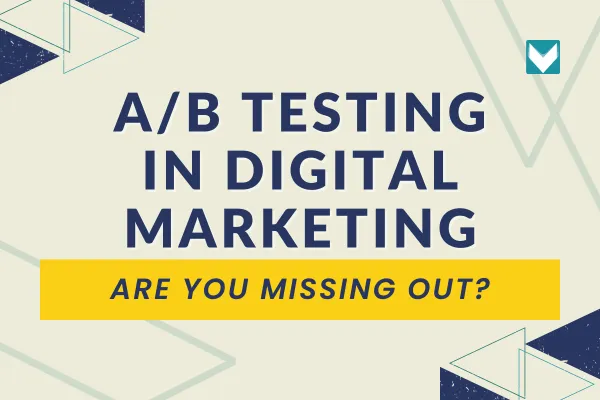

A/B Testing in Digital Marketing: Are You Missing Out?
The Power of Choice in Marketing
In the online space, even experienced marketers can miss the mark which is why A/B testing is such an important and needed aspect of your marketing plan. It’s a kind of experiment you can do with your content to determine what hits the mark and what might not be exactly right for your audience.
A/B testing consists of comparing two different versions of a webpage, email, or ad, to see which one performs better. With A/B testing, you're not just guessing what works best; you're using data to make informed decisions.
It can be incredibly effective too. Popular app provider AppSumo experienced a 50% increase in their purchases as a result of A/B testing completed on their website.
This type of testing is typically done with your web page builder, bulk email provider, or a third part site. There are also all-in-one marketing solutions, like Social Fox, that can provide you with native A/B testing capabilities for your web pages and emails, in one place.
Don't guess when you can test.
What is A/B Testing in Digital Marketing?
A/B testing, also known as split testing, is the process of showing two variants of the same webpage, ad, or email to different segments of visitors at the same time and comparing which one drives more conversions.
We’ll get into the specifics of how to do A/B testing a little later but it’s important to keep in mind that A/B testing is intended to optimize your conversions and make sure that your content is motivating your audience.
Let’s introduce a couple concepts that we’ll explore more moving forward:
Data-Driven Marketing Strategies:
A/B testing forms the basis of data-driven marketing. It ensures that marketers are basing decisions on real data rather than assumptions.
This can be done for content that is primarily attracting paid or organic traffic.
Split Testing Techniques:
This involves tweaking one element at a time (like a headline, image, or call-to-action) to see how each change affects user behavior.
The most important aspect here is to change only one element at a time. If you change a graphic and a headline, it’ll be hard to know for sure which change made the difference.
Key Elements You Should Be A/B Testing
As we know there are lots of little decisions and pieces that make up a successful marketing campaign. So where exactly should you be focusing your A/B testing efforts?
There are three primary areas where split testing can be helpful to increase conversions and improve your positioning:
Email Campaign A/B Testing:
Test different elements like subject lines, email content, graphics, and sending times to see what gets the highest open and click-through rates.
Testing Call-to-Action (CTA) Effectiveness:
Vary things like the wording, text color, and placement of your CTA buttons to find out what drives the most conversions. This can be done on websites, landing pages, with opt-in forms, and in emails.
Landing Page Optimization:
Experiment with different layouts, headlines, and content to see which version keeps visitors on the page longer and leads to more conversions. This is especially important if you want to improve your sales pages as you want these to be highly optimized and effective.
If you plan to primarily use A/B testing on your sales pages to increase conversions, we highly recommend grabbing Social Fox Marketing’s free Sale Page Playbook. We highlight all the major copywriting styles for sales pages (and we set you up with templates for each) to ensure that you’re creating highly converting copy and engaging your audience for conversions!
How A/B Testing Enhances Your Marketing Plan
We’ve touched on how A/B testing improves your marketing efforts but let’s dive in a little deeper. By regularly utilizing A/B testing in your digital marketing strategy, you don’t just improve the campaign that you’re currently testing, you also have the ability to see any changes or shifts in your audience over time.
By using these techniques on a regular basis, you allow yourself to be at the forefront of any marketing shifts by tracking relevant data and information about your conversions. This effectively puts you ahead of your competitors.
In addition to giving you the advantage, it’s ultimately better for your audience as well! By better understanding what they respond to you can more effectively serve your audience and address their pain points.
By doing this testing and committing to the process, you’ll likely see an improvement in your bottom line as well, for several different reasons:
Improving User Engagement:
By testing different elements, you can understand what resonates best with your audience, leading to increased engagement and alignment.
Higher Conversion Rates:
A/B testing helps you identify and implement changes that can lead to more conversions, whether that's signing up for a newsletter or making a purchase.
Cost-Effectiveness:
It allows you to allocate your marketing budget more effectively by focusing on strategies that have been proven to work.
With A/B testing, every click tells a story – learn to listen.
Best Practices for Effective A/B Testing
As with most any process, there are ways to A/B test that are optimal and those that… aren’t. These are mainly focused on the nuts and bolts of setting up your tests. The last thing you want is to run a test and get conflicting, or no, results.
When setting up an A/B test in digital marketing it’s important to keep in mind the following:
Test One Variable at a Time:
We can’t drive this home enough, as this is a common mistake when people start A/B testing, to accurately measure the impact of a single change, only test one element at a time.
Use a Significant Sample Size:
Ensure your test results are statistically significant by using a large enough sample size. This avoids the risk of basing decisions on random fluctuations.
Run Tests Simultaneously:
Conduct your A/B tests at the same time to account for any variables like time of day or day of the week (unless you’re testing the time variable specifically).
Analyze and Iterate:
After analyzing the results, use the insights to make informed changes and continue to refine your marketing strategy.
A/B Testing: Beyond the Basics
While most marketers are familiar with testing web pages and emails, the fun doesn’t end there! There are loads of other use cases when A/B testing can be beneficial and save a lot of money in the long run.
Social Media Ad Testing:
While there is a certain amount of experimentation necessary when putting together social media ads, it can be a slippery slope and the last thing you want to do is have your ad spend go to waste.
Experiment with different ad formats, images, and messaging to see what yields higher engagement and click-through rates, then go all in on the winners.
Video Content:
Test different video lengths, thumbnails, and call-to-actions to gauge viewer preferences and engagement levels.
Try this not only on landing or registration pages but also in your social media content or Pinterest content to see what your audience prefers.
Checkout Process:
Try varying the layout, number of steps, or information required in your checkout process to optimize for higher completion rates. You want your checkout pages and experience to be as frictionless as possible and it might take some testing to nail it.
Overcoming Common A/B Testing Challenges
There is a little technique for A/B testing that comes with practice and the more comfortable you get with changing up different elements to test, the more you’ll be able to hone in the process.
With that said, you can go overboard or off course with your testing so it’s important to make sure that you’re keeping yourself in check so as to not damage your marketing efforts.
Avoid Testing Fatigue:
Don’t overwhelm your audience with too many variations or too frequent changes. You want to be effective and up-to-date, but not confusing.
Interpret Results Correctly:
Give your tests plenty of time and be careful not to jump to conclusions based on initial results. Sometimes, the long-term effects are different from short-term ones and are even more important.
Ensure Ethical Practices:
This should go without saying but we’ll say it anyway: Always respect user privacy and adhere to ethical standards when collecting and analyzing your testing data.
Putting the Pieces Together
A/B testing in digital marketing is a necessary and incredibly useful tool to have in your arsenal. By committing to this process, you’ll not only be able to level up your marketing efforts but also get to know your target audience on a deeper level.
By routinely putting your content through A/B testing, you’ll be able to make small changes that increase your conversions and keep your finger on the pulse of any shifts taking place in your niche.
Be careful not to change too many elements at once, and only complete the necessary testing to identify the most relevant long-term changes to make to avoid confusing or frustrating your audience.
By implementing these processes you’ll be embodying the old marketing adage “Always be testing!” which is great because, in marketing, testing never goes out of style.
Frequently Asked Questions (FAQs)
1. How long should I run an A/B test to get reliable results?
It's recommended to run A/B tests for at least one to two weeks, but the duration may vary based on your traffic and the statistical significance of the results. Use this calculator to determine what sample size you need to get relevant results and then base your timeframe off that sample size.
2. Can A/B testing be used for any type of digital content?
Yes, A/B testing is versatile and can be applied to a wide range of digital content, including web pages, emails, social media ads, social media content, and more.
3. How do I know if my A/B test results are statistically significant?
Statistical significance in A/B testing is determined by the sample size and the difference in performance between the two variants. The calculator linked above can help to determine significance. Also, tools like Google Analytics or specialized A/B testing software can help you determine the significance of your results.
4. What's a common mistake to avoid in A/B testing?
The most common mistake is changing multiple elements at the same time in a single test. This makes it difficult to pinpoint which change influenced the results. Always change only one element per test to clearly understand its impact.
5. Can A/B testing improve SEO?
While A/B testing primarily focuses on user behavior and conversion optimization, it can indirectly impact SEO. For instance, if your A/B test leads to better user engagement and lower bounce rates, these metrics can positively influence your SEO rankings.
© Copyright 2019 - 2025 🦊 Social Fox | All Rights Reserved | Privacy Policy | Terms Of Use
Let Social Fox Help You...
and ultimately be your business growth partner!

